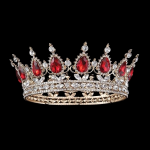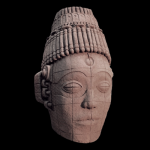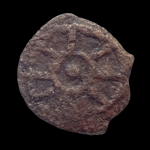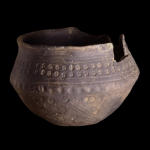The Chronicle Museum: Difference between revisions
(testing new template) |
No edit summary |
||
| Line 5: | Line 5: | ||
}} | }} | ||
'''The Chronicle Museum''' is a public museum dedicated to recording, preserving and showcasing the history, technology, art and culture of [[One Nation Under Jou | '''The Chronicle Museum''' is a public museum dedicated to recording, preserving and showcasing the history, technology, art and culture of [[One Nation Under Jou]]. The Chronicle building complex consists of a museum and a library, located in central [[Aeranas]]. The museum's exhibits and collections are primarily related to One Nation, with only limited exhibits from other parts of the galaxy. | ||
==Royal Collection== | ==Royal Collection== | ||
Latest revision as of 13:10, 18 September 2024
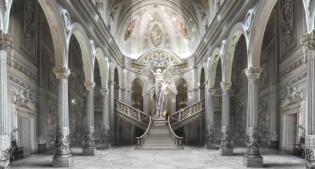
| |
| The Chronicle Museum | |
| General Information | |
| Location | Aeranas |
The Chronicle Museum is a public museum dedicated to recording, preserving and showcasing the history, technology, art and culture of One Nation Under Jou. The Chronicle building complex consists of a museum and a library, located in central Aeranas. The museum's exhibits and collections are primarily related to One Nation, with only limited exhibits from other parts of the galaxy.
Royal Collection
Coronation Crown of Moroa
The Coronation Crown of Moroa is an open crown of pale golden frame adorned with 803 valuable gemstones, consisting of 19 lowickans, 67 medium diamonds, 67 Vorsian crystals cut into leaf-like oval shapes, and 650 small diamonds. Each of the hundreds of gemstones was sourced from planets that form the nation to represent unity. The crown was commissioned in early Year 21 when the concept of One Nation was agreed upon, and it was decided to fashion new crown jewels for the coronation of Lilith of Vorsia. The task of crafting the crown fell upon the master artisans of Silver Chain, a renowned archipelago situated on Moroa, from which the crown gained its distinguishing name. The crown was designed with the intent to become part of the cultural heritage of the nation, and to serve as the regal symbol for coronations of future monarchs.
Naboo Exhibition
The Naboo Exhibition is the first, and currently the only, exhibition not related to the history of One Nation. The small collection of artefacts was donated to the museum by Rick Bender (prior to his revelation as a petty criminal), a scholar native to Naboo. The three items that make up the collection, a figurine fragment, a bronzium coin, and a piece of pottery, are all believed to be linked to an ancient race known only as Elders that colonised Naboo, and subsequently disappeared from the planet for reasons unknown. The Elder civilization remains shrouded in mystery, and much of what is known about them is based on speculation and conjecture. The few artefacts that have been uncovered suggest that the Elders were artisans and spiritual people.
Disclaimer
The Trade Federation, the current government of Naboo, acknowledges the potential value of the Elder artefacts discovered on Naboo. However, due to the rarity and age of these artefacts, the Trade Federation cannot offer any stamps of authenticity. These artefacts are displayed as is, and viewers should be aware that their true origins and historical significance may be subject to debate among scholars and experts in the field.
Elder Bust
The figurine fragment was discovered in the Lianorm Swamp of Naboo and is believed to be part of a larger statue that was once displayed within an Elder dwelling, similar in style to the colossal statues that dot Naboo's landscape. While it remains unknown whether these figurines represented the Elders themselves or the deities they worshipped, they are a testament to the Elder's artistic talents and spirit, and possibly the reverence they had for their spiritual beliefs.
Some scholars have suggested that the Elders were devoted to the Force. This theory is supported by the apparent meditative state of their statues, which suggests that the Elders were engaged in deep contemplation or perhaps even communing with the Force. The figurine fragment bears the hallmarks of the Elder's distinctive artistic style, which often combined intricate details with bold and dramatic forms. The Elder's style of art is believed to have been influenced by the natural beauty of Naboo, which is reflected in the intricate patterns and flowing lines of their artwork.
Elder Coin
The bronzium coin was discovered in the Sacred Forest of Naboo. It is believed the coin was used as a trading token or a form of currency in transactions between Elders, and perhaps other species. The Elders were a spacefaring civilization and as such likely traded with other species across the galaxy. The token is made of a singular bronzium alloy that is durable and resistant to corrosion, and it features a distinctive design that has puzzled scholars for generations. The coin holds the imagery of an eight-spoked wheel, which is a symbol that has been found inscribed on many Elder artefacts. This has led some scholars to speculate that there was a link between the Elders and the Order of Dai Bendu, a religious order that revered the balance between the Light and Dark sides of the Force. However, this theory is purely speculative, and there is no concrete evidence to support it.
Elder Pot
This well-preserved and near complete piece of Elder pottery discovered in Naboo's Lianorm Swamp offers a glimpse into the daily lives of the Elder civilization. The pottery is a simple vessel made from local clay, and it is believed to have been used for common household purposes. This pottery vessel suggests an appreciation of practical and functional objects, as well as their skill in pottery making. The walls of the vessel are thick and sturdy, indicating that it was designed for durability and everyday use. Yet, the clay piece is a work of art in its own right, with a sense of simplicity and elegance that is characteristic of Elder artefacts. The vessel's round base and cylindrical body give it a sense of solidity and stability, while the flared rim adds a touch of grace and delicacy. The surface of the pottery is decorated with a simple yet elegant pattern of lines and dots, which is a common motif in Elder pottery.
The discovery of this pottery vessel in Naboo's Lianorm Swamp suggests that the Elders may have had a presence in the region. The Lianorm Swamp is a unique ecosystem that is home to a variety of rare and exotic plants and animals, and it is believed that the Elders may have had a deep understanding of the region's ecology. Some scholars have suggested that the pottery vessel may have been used to store or transport medicinal herbs or other natural remedies found in the Lianorm Swamp.
